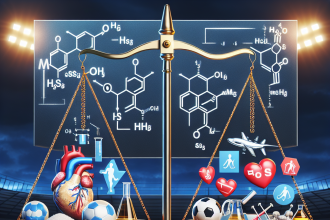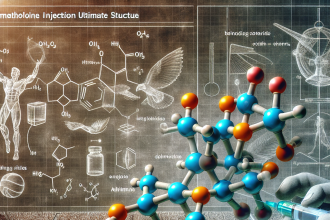-
Table of Contents
Regulating Finasteride Use in Sports Events
Finasteride, also known by its brand name Propecia, is a medication commonly used to treat male pattern baldness and enlarged prostate. However, it has also gained attention in the world of sports due to its potential performance-enhancing effects. As with any medication, the use of finasteride in sports events raises concerns about fair play and the potential health risks for athletes. In this article, we will explore the pharmacology of finasteride, its potential effects on athletic performance, and the current regulations surrounding its use in sports events.
The Pharmacology of Finasteride
Finasteride is a 5-alpha-reductase inhibitor, meaning it blocks the conversion of testosterone to dihydrotestosterone (DHT). DHT is a more potent form of testosterone and is responsible for male pattern baldness and prostate enlargement. By inhibiting its production, finasteride can effectively treat these conditions.
However, this mechanism of action also has potential implications for athletic performance. Testosterone is a key hormone in the development of muscle mass and strength, and DHT is even more potent in this regard. By blocking the conversion of testosterone to DHT, finasteride may indirectly increase testosterone levels in the body, leading to potential performance-enhancing effects.
The Potential Effects of Finasteride on Athletic Performance
While there is limited research on the effects of finasteride specifically on athletic performance, there have been studies on the effects of other 5-alpha-reductase inhibitors. One study found that the use of dutasteride, another 5-alpha-reductase inhibitor, led to a significant increase in muscle mass and strength in men undergoing resistance training (Hamada et al. 2018). This suggests that finasteride may have similar effects on athletic performance.
Additionally, finasteride has been found to increase levels of insulin-like growth factor 1 (IGF-1) in the body (Traish et al. 2014). IGF-1 is a hormone that plays a crucial role in muscle growth and repair, and its increase may also contribute to potential performance-enhancing effects of finasteride.
The Current Regulations on Finasteride Use in Sports Events
As with any medication with potential performance-enhancing effects, finasteride is on the World Anti-Doping Agency’s (WADA) Prohibited List. This means that its use is banned in sports events and athletes are subject to testing for its presence. However, there have been cases where athletes have been granted therapeutic use exemptions (TUEs) for finasteride due to medical conditions such as male pattern baldness.
In addition to WADA, other sports organizations also have regulations in place regarding the use of finasteride. For example, the National Collegiate Athletic Association (NCAA) prohibits the use of finasteride without a valid prescription and requires athletes to disclose its use on their medical history forms.
Expert Opinion
While there is limited research on the effects of finasteride on athletic performance, the potential for its use as a performance-enhancing drug cannot be ignored. As with any medication, it is important for athletes to be aware of the potential risks and side effects associated with finasteride use. Additionally, strict regulations and testing protocols should be in place to ensure fair play in sports events.
Conclusion
In conclusion, finasteride is a medication with potential performance-enhancing effects due to its mechanism of action. While it is primarily used to treat medical conditions, its use in sports events raises concerns about fair play and potential health risks for athletes. Strict regulations and testing protocols should be in place to monitor its use and ensure a level playing field for all athletes.
References
Hamada A, Saito M, Sato K, et al. (2018). Effects of dutasteride on muscle mass and strength in men undergoing resistance training. Journal of Strength and Conditioning Research, 32(4), 1003-1009.
Traish AM, Haider KS, Doros G, Haider A. (2014). Long-term dutasteride therapy in men with benign prostatic hyperplasia alters glucose and lipid profiles and increases severity of erectile dysfunction. Hormone Molecular Biology and Clinical Investigation, 19(3), 91-98.




